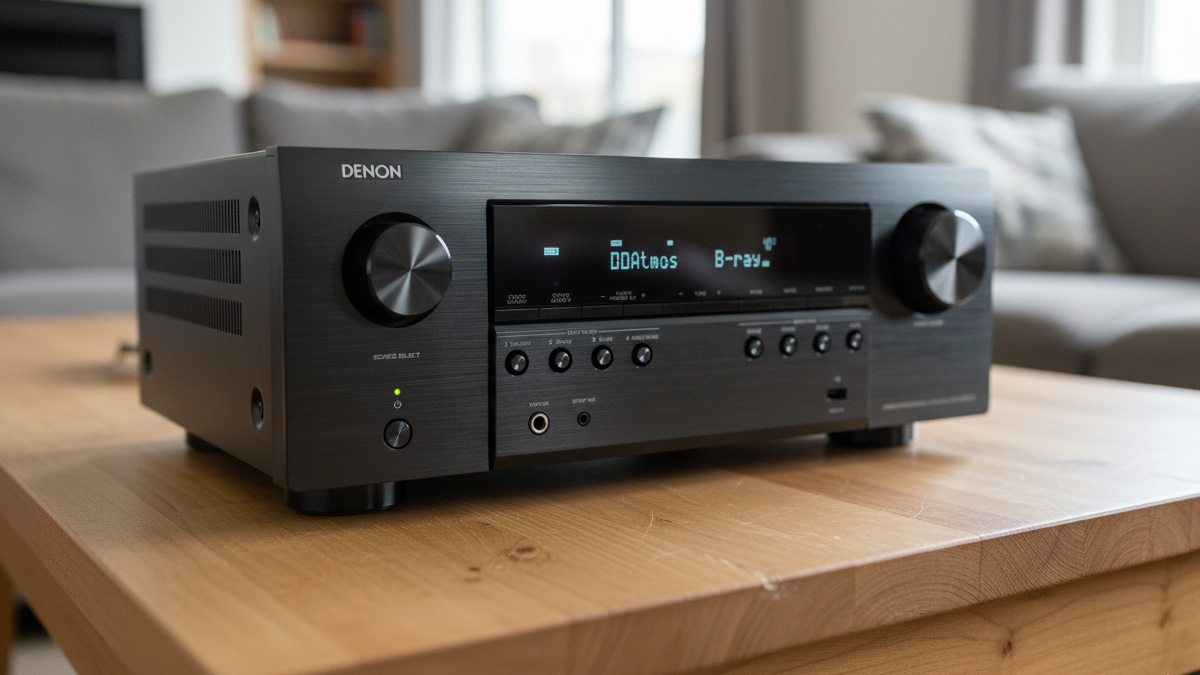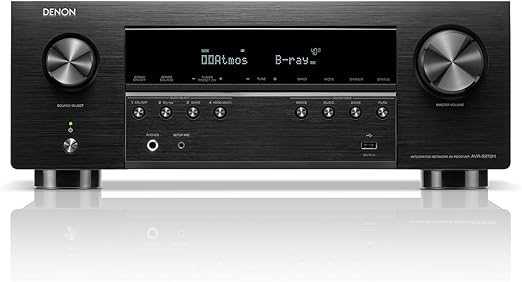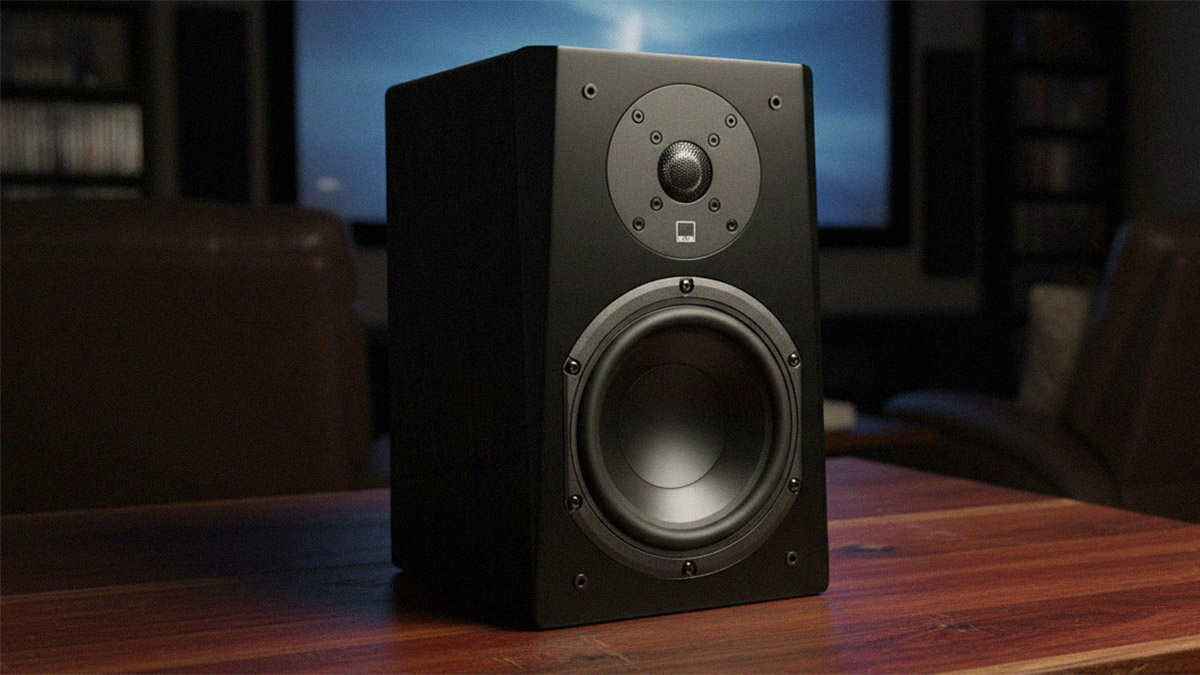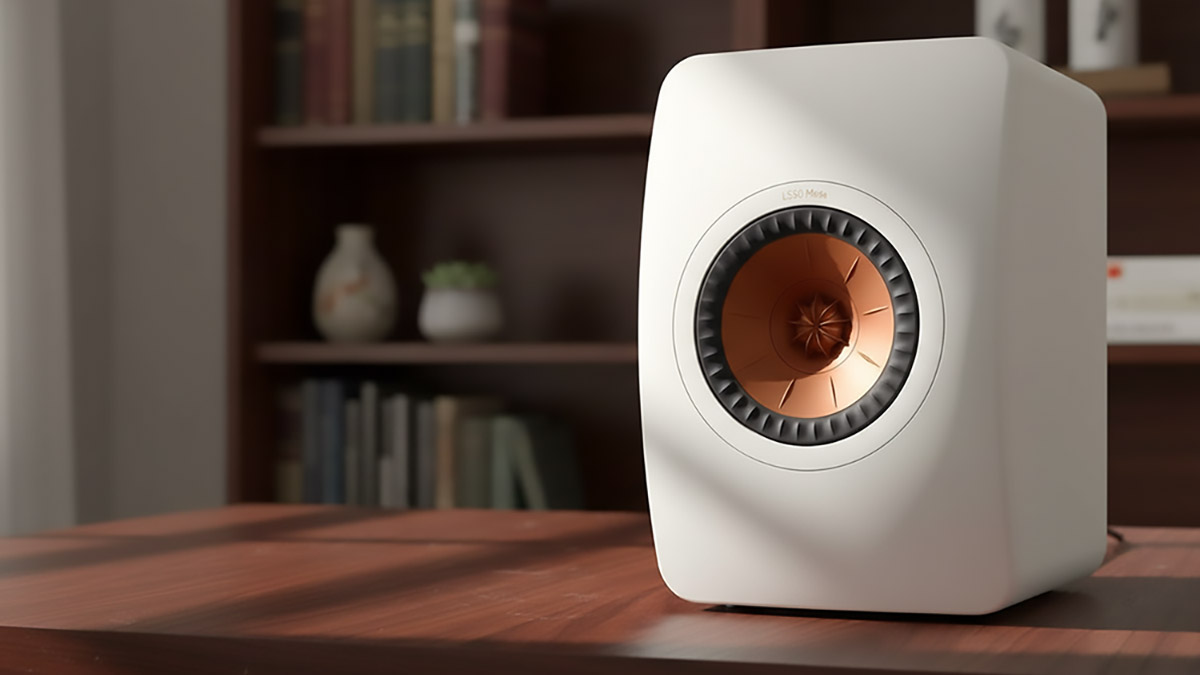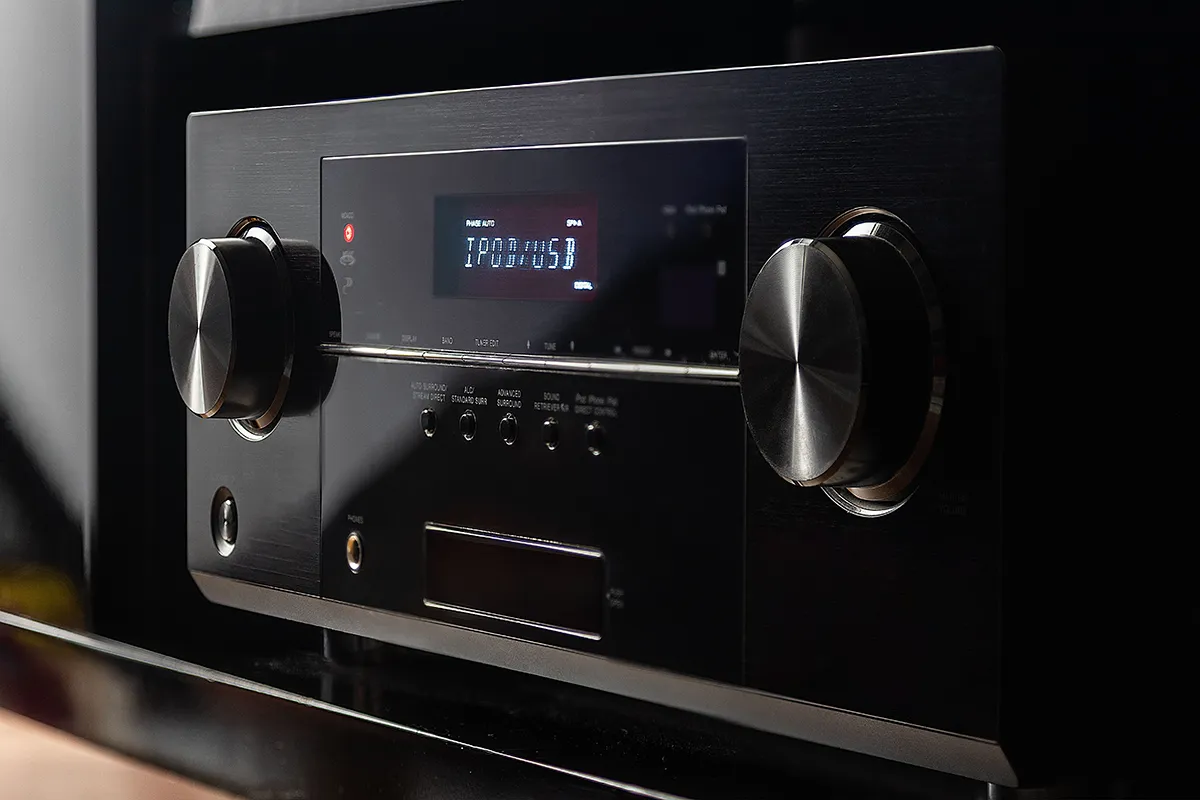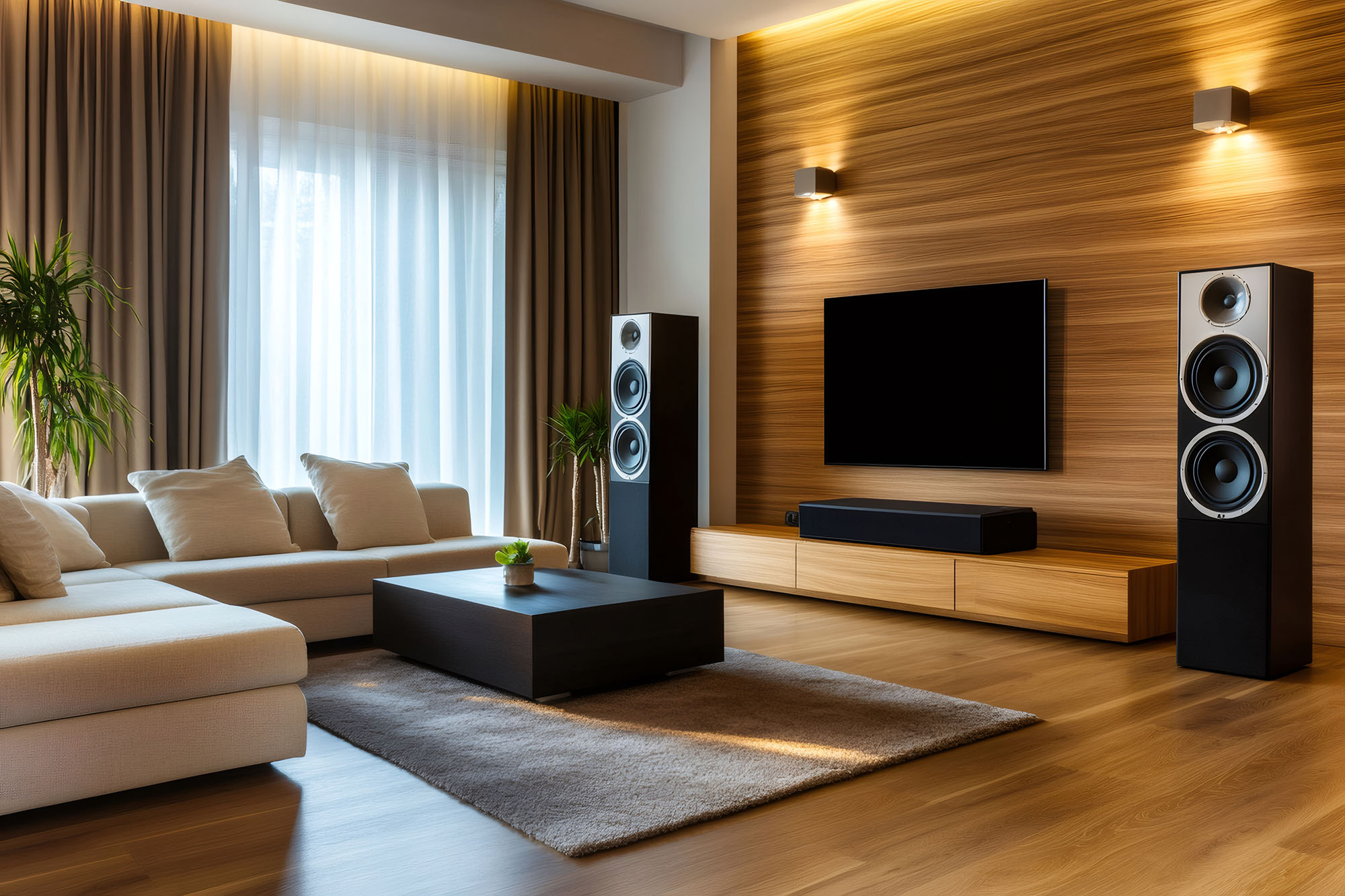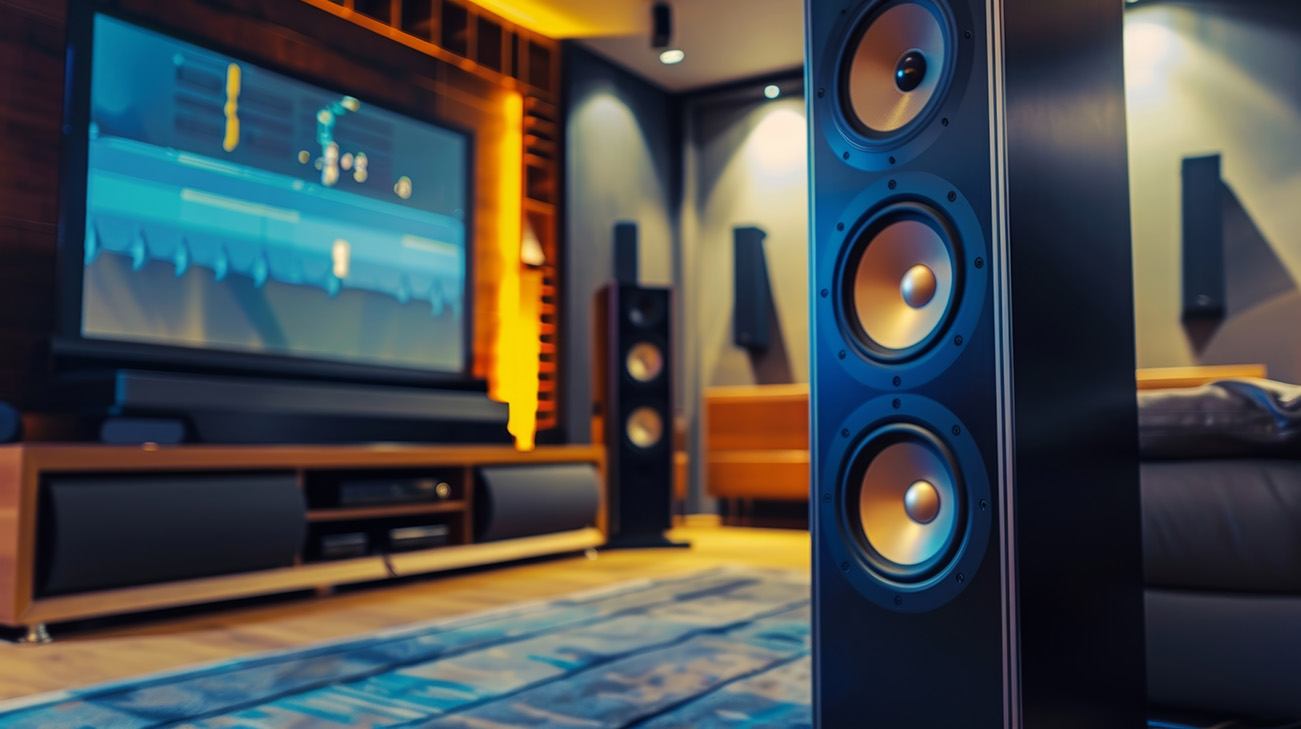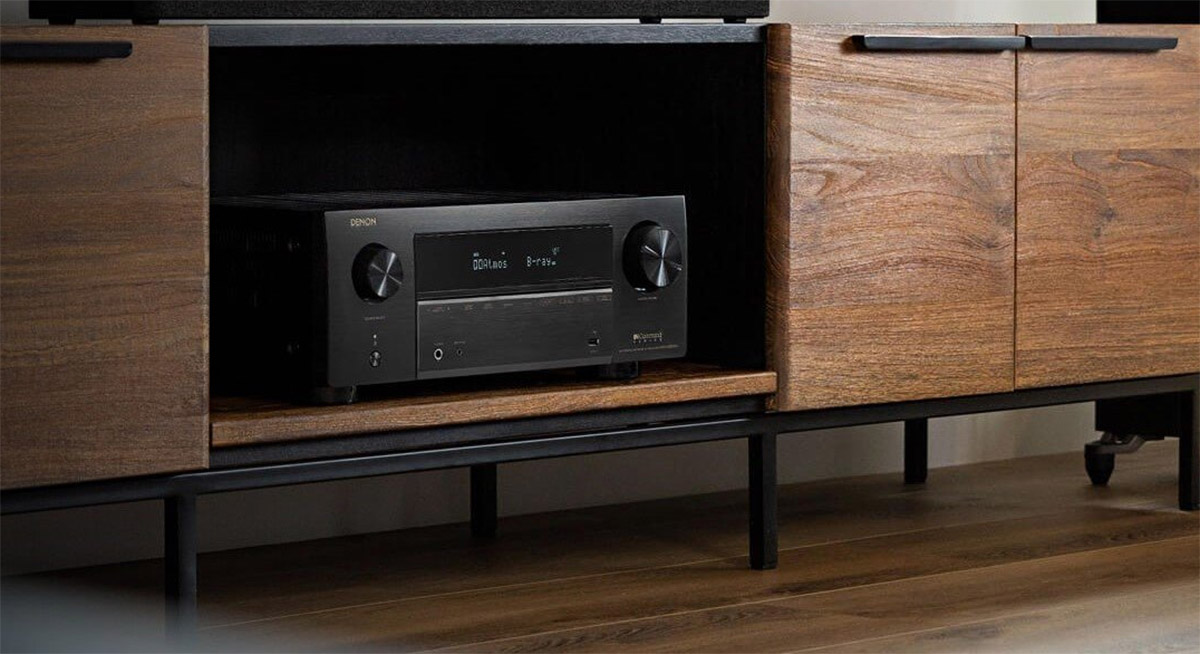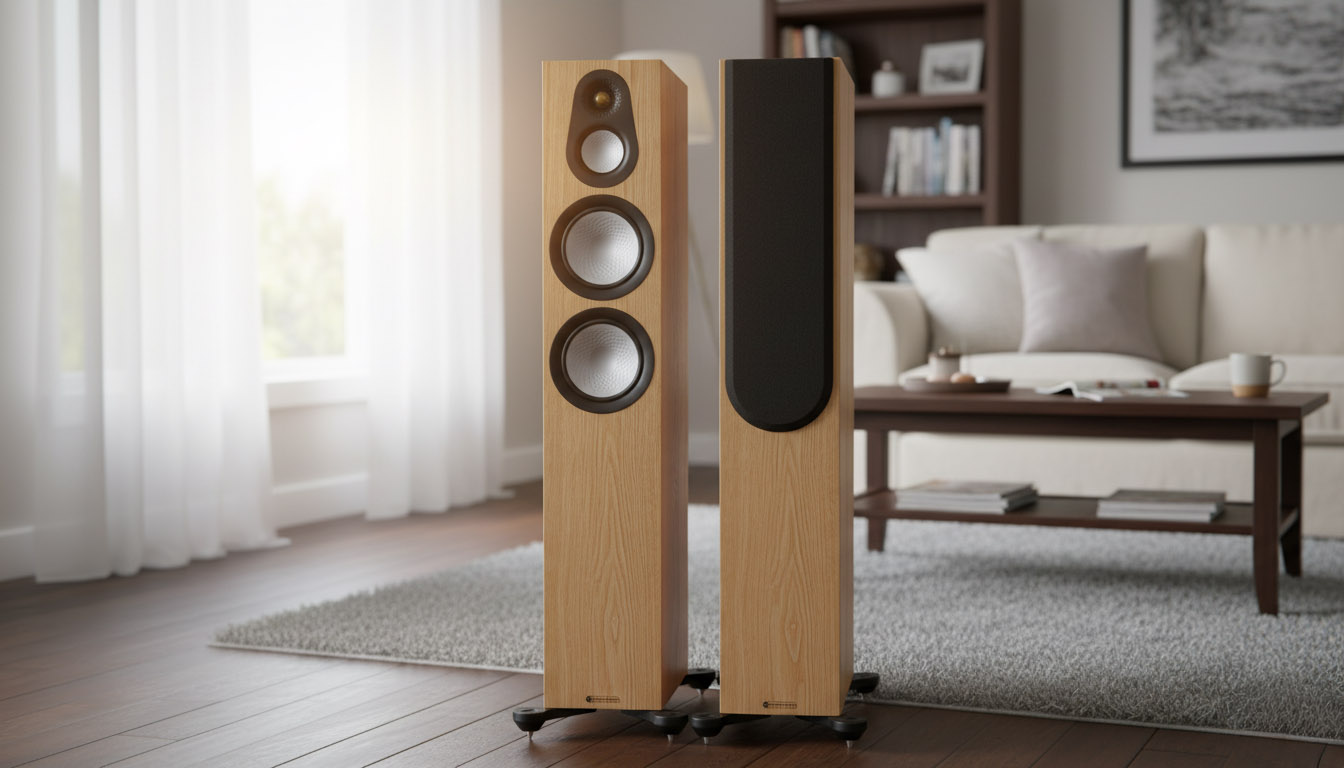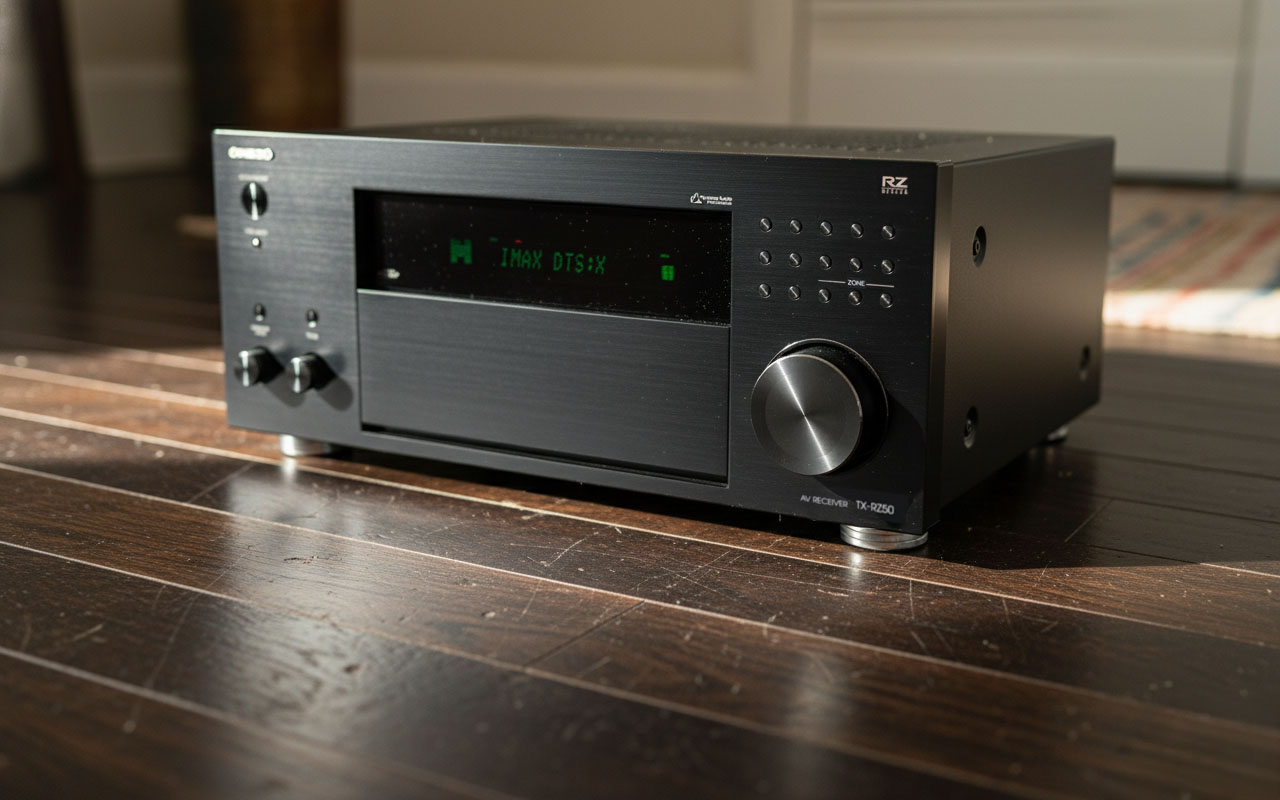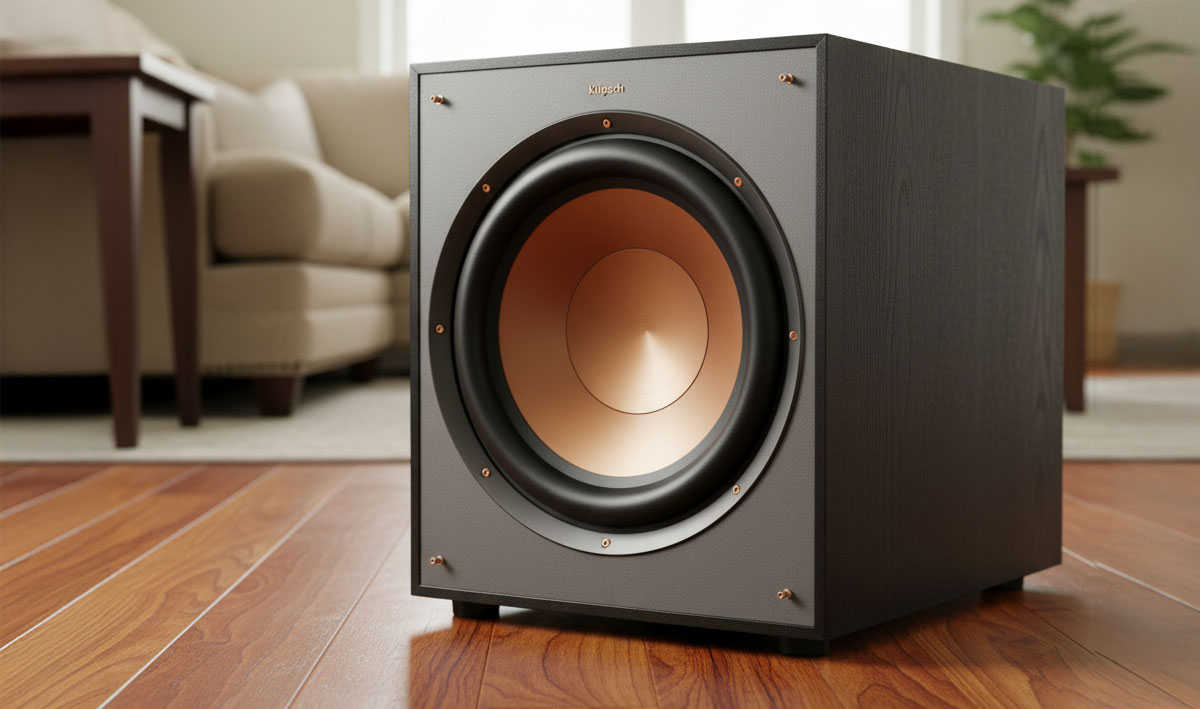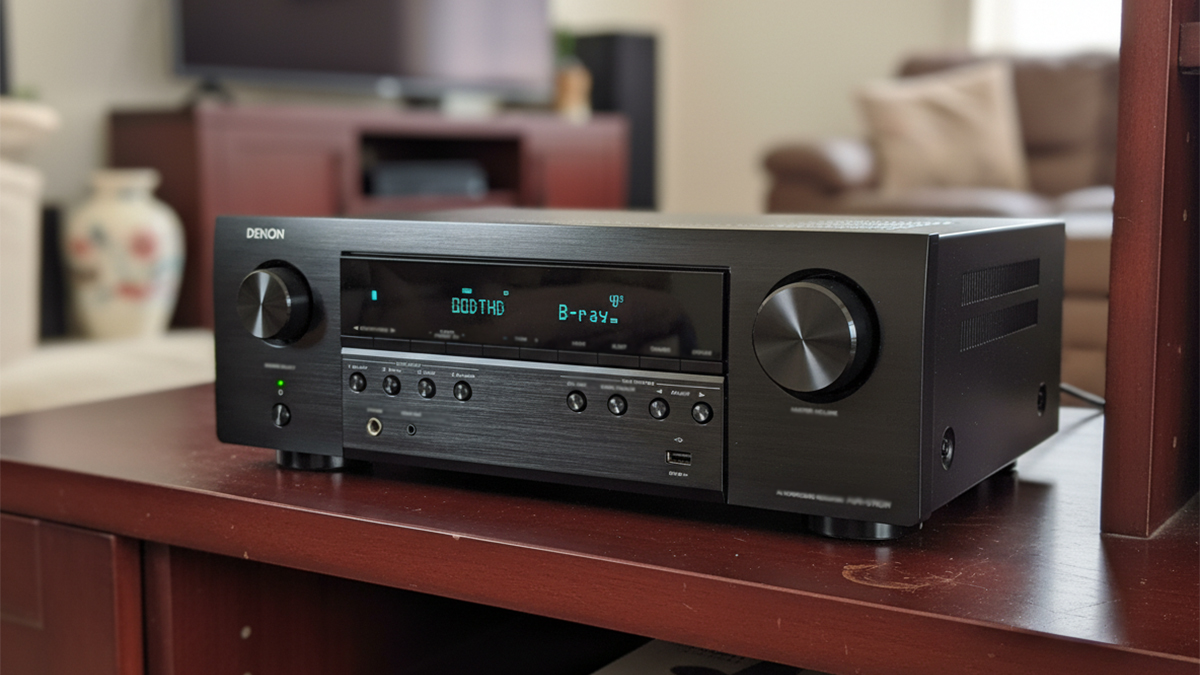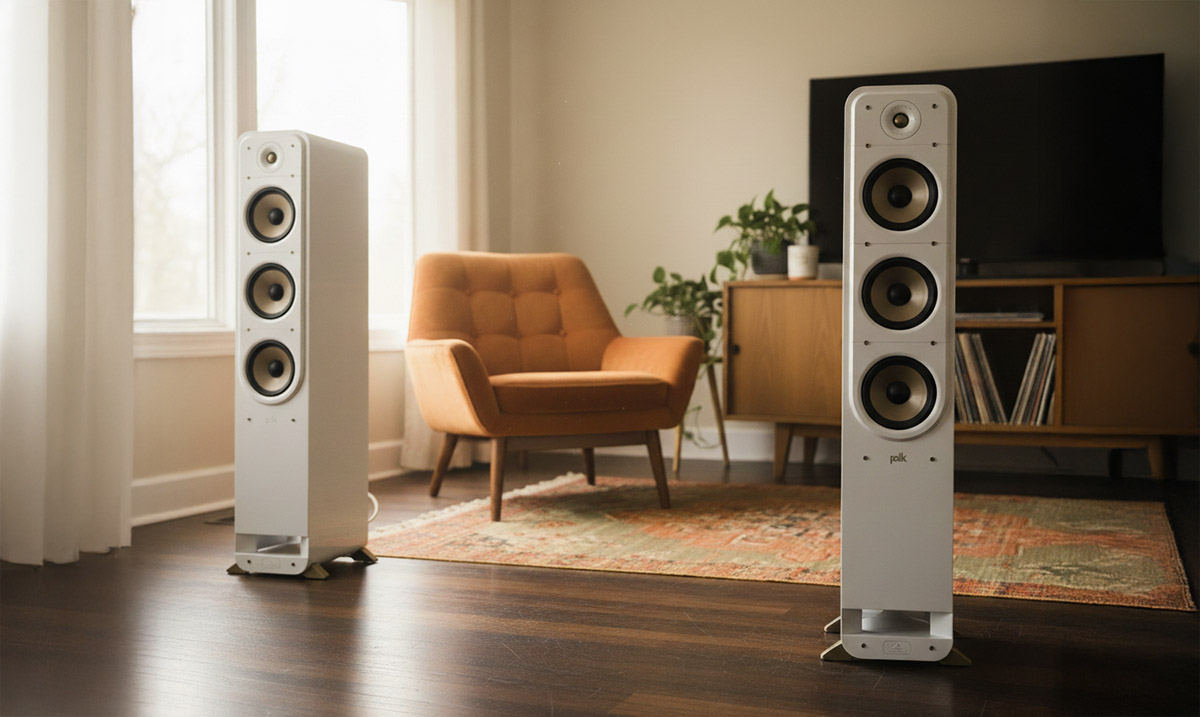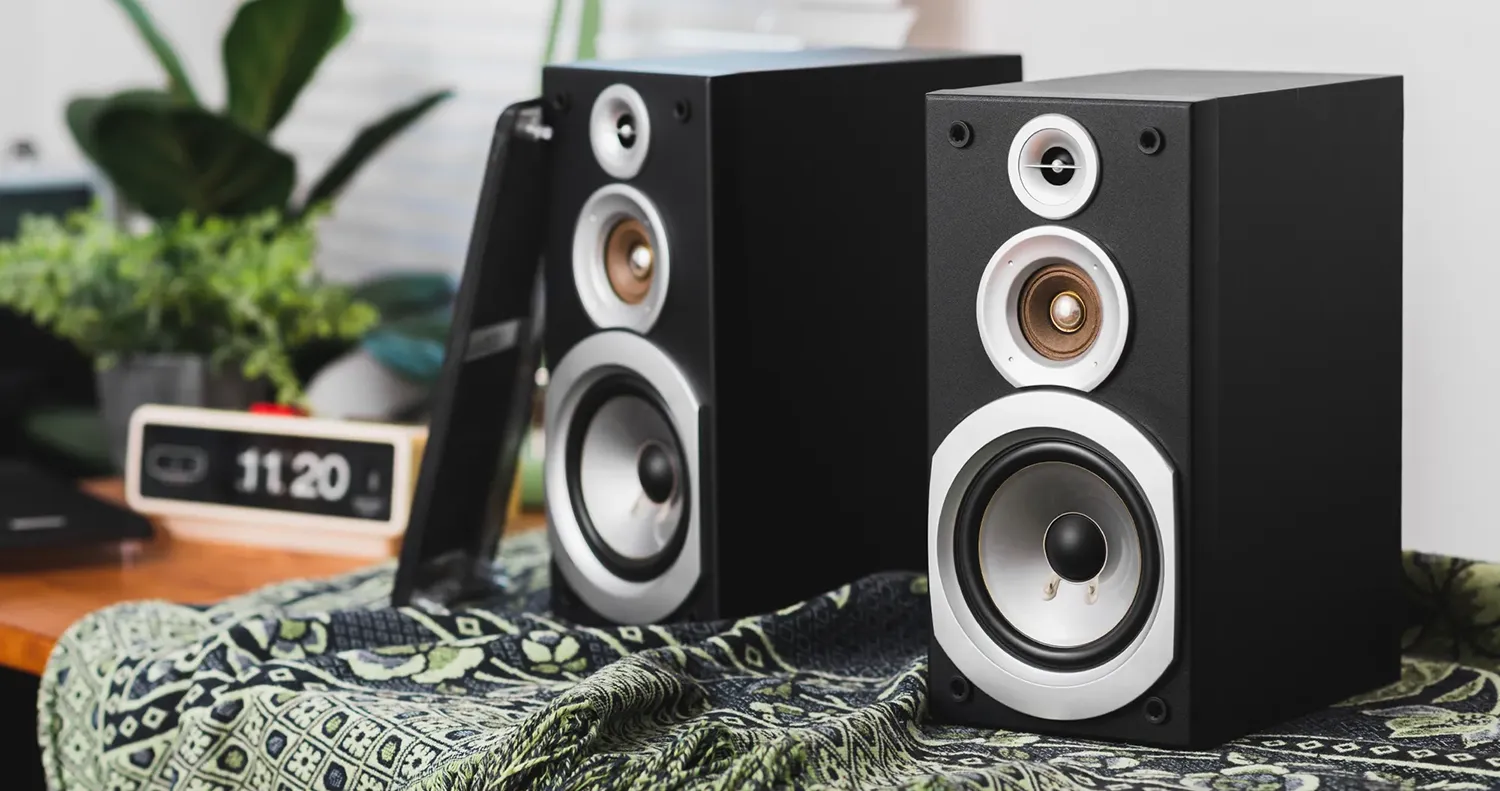Quick Take
If you want an easy step into immersive sound that also plays nicely with new gaming consoles and 8K displays, the Denon AVR S970H hits a sweet spot. Owners frequently praise the straightforward setup, the clear dialogue, and the way Audyssey room calibration tidies up a space. Day to day it feels simple to live with thanks to HEOS streaming, AirPlay 2, and quick input switching. Not every review is glowing. A few users wish the on screen menus felt fresher, and some note that you still need careful speaker placement for best bass. Overall though, this is a confident seven channel hub that brings modern video features and dependable sound to medium size rooms.
Pros:
![]() Clear dialogue and cohesive surround after Audyssey calibration
Clear dialogue and cohesive surround after Audyssey calibration
![]() Reliable 4K120 gaming on the HDMI 2.1 inputs once assigned correctly
Reliable 4K120 gaming on the HDMI 2.1 inputs once assigned correctly
![]() Quick, stable input switching and eARC for easy TV app audio
Quick, stable input switching and eARC for easy TV app audio
![]() HEOS and AirPlay 2 make everyday music and multiroom use simple
HEOS and AirPlay 2 make everyday music and multiroom use simple![]() Dual sub outputs help smooth bass across seats with sensible placement
Dual sub outputs help smooth bass across seats with sensible placement
![]() Guided setup and on-screen prompts reduce first-time friction
Guided setup and on-screen prompts reduce first-time friction
Cons:
![]() Interface looks plain and menus take time to learn
Interface looks plain and menus take time to learn
![]() Bass impact still depends on smart sub placement even after calibration
Bass impact still depends on smart sub placement even after calibration
![]() Occasional HDMI handshake tweaks needed (cables/eARC settings)
Occasional HDMI handshake tweaks needed (cables/eARC settings)
![]() No Quick Media Switching, so brief blank screens can occur when switching sources
No Quick Media Switching, so brief blank screens can occur when switching sources
Introduction
The Denon AVR S970H sits near the top of Denon’s S Series as a do it all receiver for living rooms and dedicated media spaces. It drives up to a 7.2 speaker layout or a 5.2.2 Dolby Atmos setup and bakes in modern HDMI features so you can plug in current consoles and streamers without workarounds. The pitch is simple. Give buyers a receiver that feels welcoming on day one, supports the latest video formats, and still has headroom for better speakers down the line. On paper and in owner feedback, the S970H largely delivers on that promise.
Key Features and Why it Matters to You
- Seven amplified channels at 90 watts per channel
You can build either a classic 7.2 layout or a 5.2.2 Atmos system without adding external amps. That power rating, measured across the full audible band, gives you clean headroom for clear dialogue and convincing effects in a medium room.
- Six HDMI inputs and two HDMI outputs
Keep every source connected at once and run a single cable to the TV or projector. The second HDMI out is handy for a projector or another display, so movie night and casual viewing can coexist without re-plugging.
- Three HDMI 2.1 inputs with 8K60 and 4K120
Next-gen consoles and high-frame-rate streamers work the way they should. Fast motion looks smooth, and you will not have to reshuffle cables when you add a new device.
- eARC on the main HDMI out
TV apps can send full-quality audio back to the receiver over one cable. That keeps the setup tidy and still lets you hear Atmos and high-bitrate soundtracks from built-in streaming apps.
- Dolby Vision, HDR10+, HLG, and 8K upscaling
Whatever you watch, the receiver passes the most common HDR formats intact. Older sources also benefit from clean upscaling so a new display does not expose rough edges.
- VRR, ALLM, and QFT for gaming
Variable Refresh Rate reduces tearing, Auto Low Latency Mode trims input lag, and Quick Frame Transport helps motion feel snappier. You switch from movies to games without digging through menus.
- Dolby Atmos and DTS:X, plus virtual height modes
Add ceiling or up-firing speakers for true overhead effects, or use the built-in virtualization if you cannot install height channels yet. Either way, the sound field expands beyond the front wall for a more immersive experience.
- Audyssey MultEQ with Dynamic EQ and Dynamic Volume
Room correction measures your speakers and smooths response across seats. Dynamic EQ preserves clarity at lower volumes, while Dynamic Volume reins in big swings so late-night viewing stays friendly to neighbors.
- Dual subwoofer outputs
Running two subs lets you place them in different spots and even out bass from seat to seat. The result is tighter impact without boomy hot spots.
- HEOS, AirPlay 2, and Bluetooth
Stream music from your phone, group rooms for whole-home audio, or hand the remote to a guest and let them Bluetooth a playlist. Everyday listening becomes effortless.
- Phono input for moving-magnet cartridges
Plug a turntable straight in without buying a separate preamp. Vinyl sessions are one input change away.
- Setup assistant and Quick Select presets
On-screen prompts guide you from wiring to calibration. Save your favorite combinations of input and sound mode to a front-panel button, then jump from “Game 4K120” to “Movie Atmos” in one press.
Sound Quality and Setup
Most users describe the AVR S970H as a clear upgrade over older units, with dialogue that snaps into focus and surround effects that feel more defined. The guided setup makes it easy to get a first pass right, and running Audyssey once or twice with a few manual tweaks gets you the rest of the way. People also call out that the receiver wakes quickly, switches inputs reliably, and handles 4K at 120 frames from a console without drama when cabled to the right 2.1 inputs. These experiences line up with Denon’s feature claims and the behavior you should expect once the correct HDMI ports are used.
There are recurring critiques as well. Some owners say the interface looks plain, and the depth of the menu tree takes a few evenings to fully learn. Others point out that while Audyssey evens out the midrange nicely, bass still depends on smart subwoofer placement. A handful of buyers describe initial HDMI handshakes that required toggling TV settings for eARC or trying a different certified cable, which is common in mixed brand systems. In most cases those snags were one time adjustments rather than ongoing issues. The general pattern is positive: once configured, the unit gets out of the way and lets the content shine.
RELATED: Best AV Receivers for About $500
Gaming feedback is particularly upbeat for this price tier. Users appreciate having multiple HDMI 2.1 inputs so both a PlayStation and an Xbox can stay connected with 4K at 120 frames and Variable Refresh Rate engaged. Owners also like that ALLM kicks the TV into its low latency mode, which removes extra steps when switching from movies to a game session. These are small quality of life wins that add up over a week of casual use.
Who Is It For?
Pick the Denon AVR S970H if you want a friendly receiver that can anchor a 5.2.2 or 7.2 system without sacrificing modern video features. It suits living rooms and mid size theaters where you need simple streaming, strong dialogue performance, and a path to Atmos either now or later. If you already own Denon Home speakers or plan to add wireless zones, HEOS support makes multiroom audio painless. On the other hand, if you want more advanced room correction like Audyssey MultEQ XT32 or Dirac, or you expect to expand to nine or more channels, you should look higher in the Denon lineup or to competitors with those options built in.
Tips for Better Results
Start with the speaker layout you can accommodate today, then run the on screen setup assistant slowly. Place the included Audyssey mic at ear height and measure in the recommended positions. After calibration, confirm that your fronts are set to small if you use a sub and set an initial crossover around eighty hertz. Label HDMI inputs and connect high frame rate devices to the sockets that support 8K and 4K at 120 frames. Turn on eARC in both the TV and the receiver. If bass feels uneven, experiment with sub location along the front wall and rerun Audyssey. Finally, save a few Quick Select presets for your usual routines so you can jump between a movie night profile and a late night listening mode with one button.
Alternatives to Consider
If you want something simpler or plan a smaller system, Denon’s AVR S760H keeps the same general approach with lower rated power and fewer HDMI 2.1 lanes. If you prefer a parallel Denon with a slightly different feature mix, the AVR X1700H is worth a look; it sits in the X Series and carries similar core specs with a different chassis and feature emphasis. Outside the brand, Onkyo’s TX NR6100 and Yamaha’s RX V6A are popular midrange competitors that also provide 4K at 120 frames and Atmos, though their room correction and streaming platforms differ. Your choice will come down to which calibration system and app ecosystem you prefer.
Final Thoughts
The Denon AVR S970H is easy to recommend if you want a capable seven channel receiver that will keep up with modern sources. It covers the big bases: clear sound, reliable HDMI 2.1 support on the right inputs, broad HDR support, and built in streaming through HEOS and AirPlay 2. You still have to do your part with placement and calibration, and the interface will not win any style awards, but the fundamentals are solid. Once it is set, you get a receiver that fades into the background and simply makes movies, shows, and games more fun. That is exactly what most folks are after.
FAQ
Does the AVR S970H support 8K and high frame rate gaming?
Yes. It supports 8K at 60 frames and 4K at 120 frames on three HDMI inputs and the main output, along with VRR, ALLM, and QFT.
How many HDMI connections are there?
There are six HDMI inputs and two HDMI outputs. The main output supports eARC for sending audio from the TV back to the receiver.
Which room correction does it use?
It uses Audyssey MultEQ with Dynamic EQ and Dynamic Volume. You can also use the optional Audyssey app for deeper tweaking.
Can I hook up a turntable?
Yes. There is a moving magnet phono input on the back.
Is there built in streaming?
Yes. HEOS enables streaming and multiroom audio, and it supports AirPlay 2 plus Bluetooth. Popular services like Spotify Connect and Pandora are supported in the HEOS app.
What is the rated power?
Denon rates it at 90 watts per channel into eight ohms with two channels driven from 20 hertz to 20 kilohertz at 0.08 percent THD.
What speaker layouts work best?
Common choices are 5.2.2 with two height speakers for Dolby Atmos or a traditional 7.2 layout. The two subwoofer outputs help smooth bass across multiple seats.
Any physical specs to know?
Without antennas, it measures about 17.1 inches wide, 13.0 inches deep, and 6.6 inches tall and weighs about 21 pounds.
Teksignal.com participates in the Amazon Services LLC Associates Program, an affiliate advertising program designed to provide a means for sites to earn advertising fees by advertising and linking to Amazon.com

